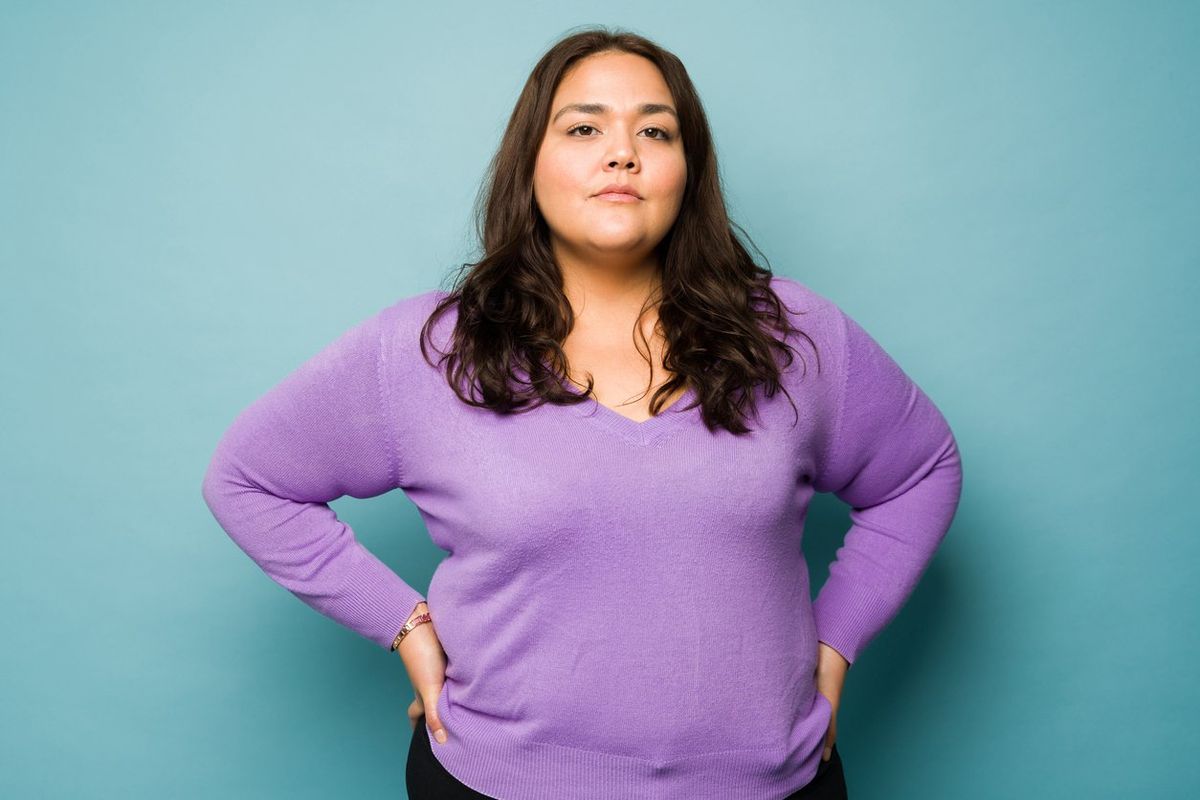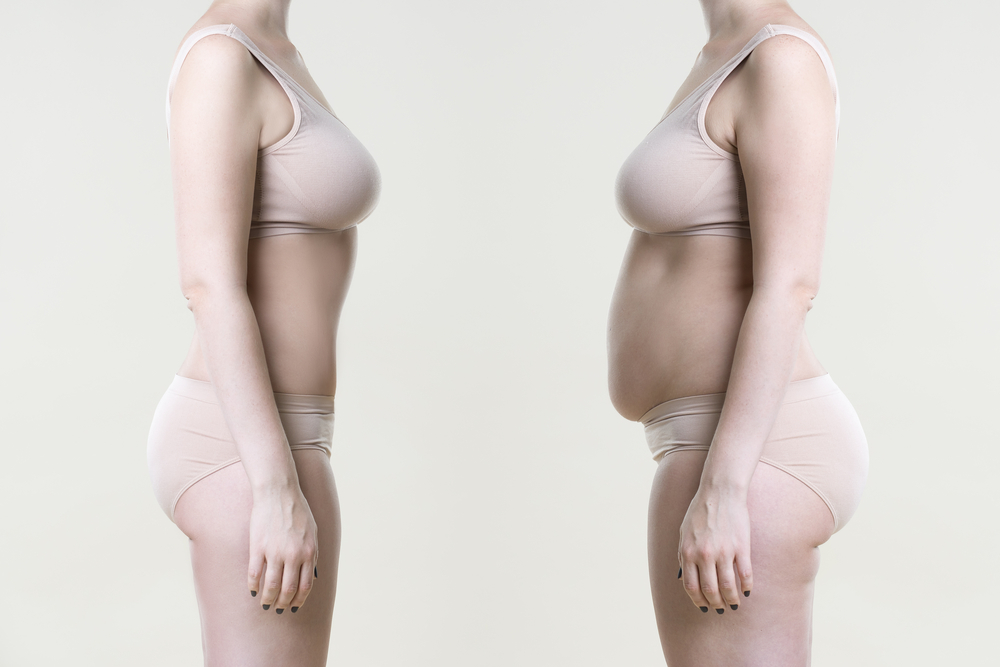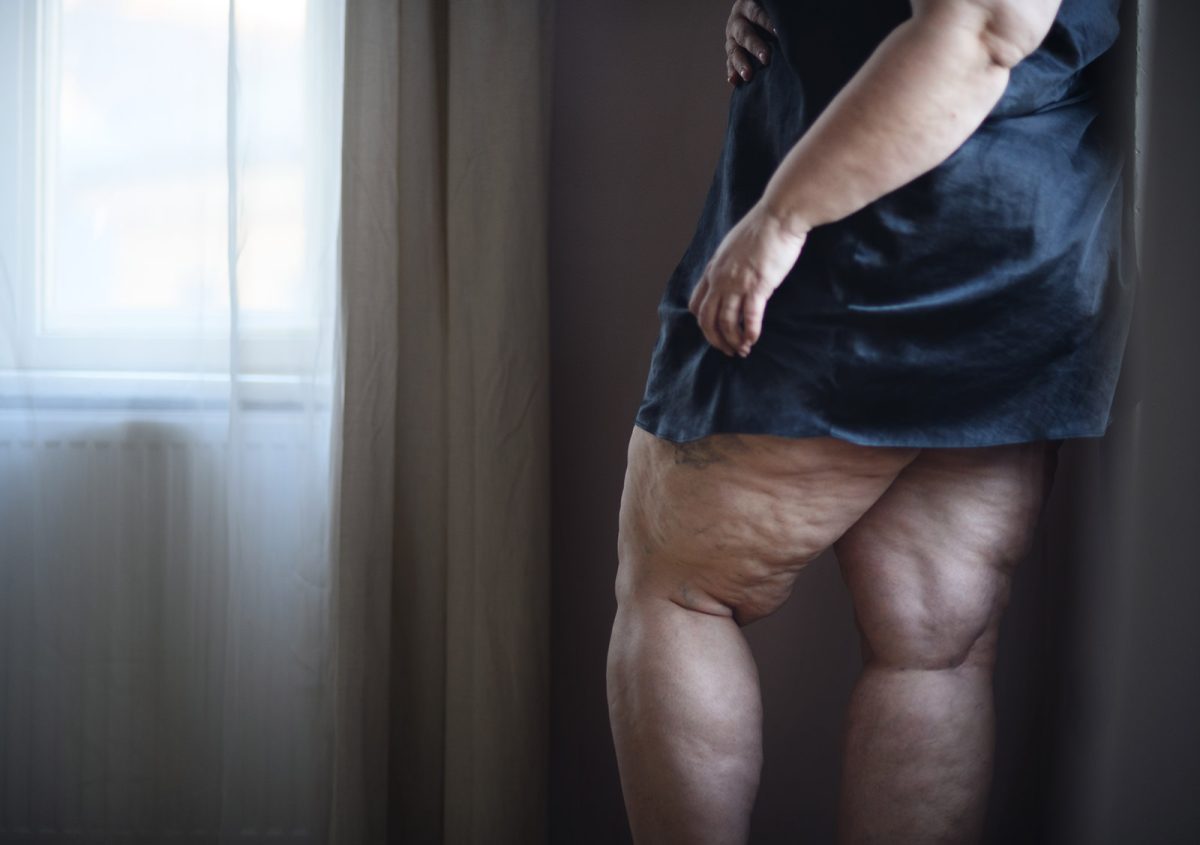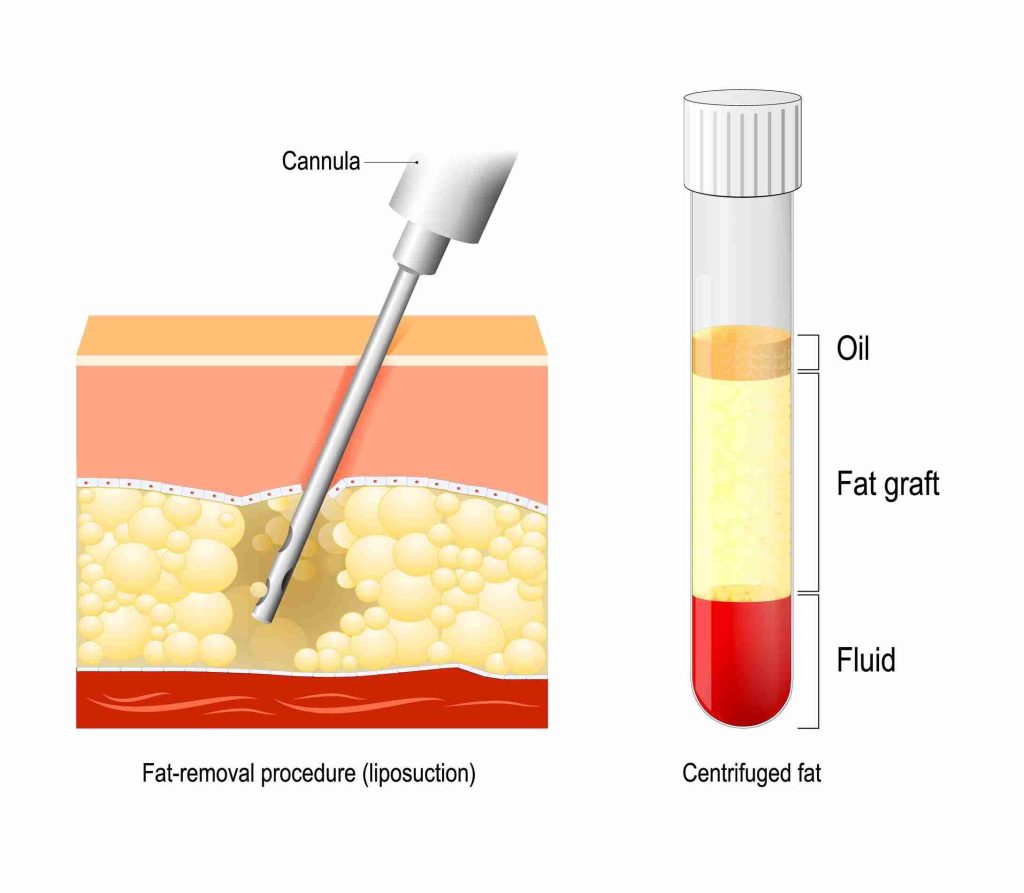Key Takeaways
-
Due to the popularity of liposuction, modern techniques have taken minimal invasiveness to new levels. This evolution results in faster recovery times, decreased risks, and more natural-looking results compared to traditional methods.
-
Advanced technologies such as laser, ultrasound, and radiofrequency-assisted liposuction have increased precision and efficiency. They further enhance patient comfort by better targeting individual body sculpting needs.
-
During fat transfer procedures, unwanted fat is first removed from one area of the body. They create volume in another area, providing natural-looking results with a very low risk of allergic reaction.
-
When performed properly, modern liposuction and fat transfer procedures can offer remarkable aesthetic and health advantages. It’s important to weigh possible complications such as irregular contours or fluid collection. Working with a qualified, board-certified plastic surgeon can avoid or minimize these complications.
-
Ideal candidates for body sculpting are those in good health with realistic expectations and localized fat deposits that are resistant to diet and exercise. People with some medical problems or those with unstable weight may not be good candidates for these procedures.
-
Choosing the right procedure involves careful consideration of personal goals, body type, recovery expectations, and consultation with an experienced specialist to ensure the best outcome.
These innovations yield more accurate and efficient outcomes for body sculpting. Newer forms of liposuction, such as laser-assisted or ultrasound-assisted procedures, focus on removing fat with less downtime and more precise contouring.
Fat transfer, more commonly known as fat grafting, has seen a meteoric rise in popularity. Individuals are utilizing it to augment the face, breasts, and buttocks with their own fat. These innovations ensure the most natural-looking results possible with less risk than you would have gotten using outdated techniques.
By combining these techniques, it is possible to create the most personalized treatments to help patients achieve their specific goals. It’s an industry where technology and methods are changing almost daily.
Not only have body sculpting options become more accessible, they’ve become more effective, meeting the growing demand for safe and highly customizable cosmetic procedures.
What Is Modern Liposuction
Here’s how modern liposuction is revolutionizing body sculpting. It merges state-of-the-art technology with advanced techniques to redefine and improve your body’s natural contours.
Modern procedures focus on precision, safety, and efficiency. Unlike the older techniques, they are now one of the preferred treatments among those looking for a dramatic but non-invasive change.
These advancements have evolved liposuction from merely being a fat removal method. It is now an art form, with an emphasis on creating a more balanced, natural-looking body proportion.
How Modern Liposuction Works
Just like modern liposuction, the process begins with the use of a tumescent solution. This specialized fluid helps to numb the area, minimize bleeding, and facilitate a smoother fat removal process.
This new solution opened the door for more sophisticated solutions such as power-assisted liposuction (PAL). It uses fast vibrations to liquefy fat, so it’s easier to extract.
These methods allow the surgeons to target areas of concern much more precisely. They customize every procedure to their patient’s specific anatomy and desired goals.
Patient-specific planning has been at the core of these modern techniques. By paying attention to variables such as body type and aesthetic goals, surgeons are able to produce tailored results.
In fact, after just a single treatment session, most patients notice a stunning 20%-25% decrease in the thickness of fat. They’re seeing much better contouring results.
Recovery is equally as streamlined, with the majority of patients returning to daily activities within a few days.
Differences From Traditional Liposuction
Traditional liposuction can take weeks to recover, but we’ve modernized the procedure to cut recovery time down immensely. The older procedures required weeks of recovery time.
By comparison, most of today’s patients are back to their usual routine in two to four weeks—and some even the same day. Other than saving time, the chance of complications has decreased because of increased patient safety, lower risks during procedures, and better monitoring.
One major exception to this rule is skin tightening. Today’s techniques not only remove unwanted fat, but improve the look and feel of skin, creating better aesthetic outcomes.
Advancements such as liposculpture go even further by focusing on enhancing natural contours, resulting in a more harmonious appearance.
Why Modern Liposuction Is Popular
This tidal wave of demand for body sculpting comes from rising public consciousness and expectations of what is now possible aesthetically. Social media and celebrity endorsements have furthered this trend, normalizing and celebrating procedures such as liposuction.
With a quicker recovery and little to no scarring, modern techniques make liposuction even more attractive.
With patient satisfaction rates over 90%, the proof is in the pudding with the dependable, life-changing results these procedures provide.
The convenience of returning to daily life within days and the dramatic, lasting results after a single session make modern liposuction a highly sought-after option.
Advanced Techniques In Liposuction
The field of body sculpting has made incredible advances, especially with the techniques we use for liposuction. These advancements really benefit patients, not just in their satisfaction. The purpose of these innovations is to make procedures even safer.
These alternative approaches customize their strategies to address unique needs and focus on high-priority areas. Their results are much more targeted and efficient, often producing results in less recovery time.
Advanced Techniques In Liposuction
Below, we outline the five most popular advanced liposuction techniques and what sets them apart.
1. Laser-Assisted Liposuction
Laser-assisted liposuction involves the use of laser energy to liquefy fat cells, making them easier to remove with smaller cannulas. This technique is particularly useful for areas such as the thighs or arms, where a high level of precision is required.
Its additional power comes from helping to boost collagen production, which in turn firms and tightens the skin naturally. Patients enjoy a quick recovery, with most returning to their normal routine in less than a week.
2. Ultrasound-Assisted Liposuction
Utilizing ultrasonic waves, this method liquefies fat cells, making them easier to remove. It’s particularly effective at targeting dense, stubborn areas of fat, like those found in the back or abdomen, with incredible precision.
Less damage to the tissue just means less bruising and swelling, resulting in an easier recovery process.

3. Power-Assisted Liposuction
Power-assisted liposuction uses a mechanized cannula that vibrates, making it easier to remove fat. This technique maximizes time savings for surgeons, shortening procedure time.
Patients enjoy shorter treatment sessions with a less invasive procedure that improves comfort even more.
4. Water-Assisted Liposuction
This technique employs a fine spray of water to wash away fat cells, protecting the surrounding tissue from unnecessary trauma. Because recovery times are so speedy, patients often see noticeable results within mere days.
This technique is perfect for those looking for a less-invasive, more tissue-sparing procedure.
5. Radiofrequency-Assisted Liposuction
By pairing fat removal with skin tightening, radiofrequency-assisted liposuction utilizes heat energy to promote skin elasticity. The procedure provides the added benefit of both contouring and skin quality improvement.
It is virtually painless during the procedure.
Innovations In Fat Transfer
Fat transfer, or fat grafting, is now a mainstay in contemporary cosmetic surgery. This minimally invasive procedure uses liposuction to harvest fat from an area of your body. It then reinjects that purified fat into a different area to increase volume, smooth out imperfections, or improve contours.
Amazing advancements in technology and techniques have completely changed the game in fat transfer. It has since evolved into a more effective and safer option than synthetic fillers.
What Is Fat Transfer
The procedure starts with liposuction to harvest the fat from areas such as the abdomen, thighs or flanks. The harvested fat is then further purified to get rid of impurities and make sure only the healthiest, most viable cells are left.
After processing, the fat is injected meticulously into the desired areas with techniques that enhance the survival of fat to achieve optimal results. Automated systems now optimize fat particle size, creating even more safety and lowering risks such as fat necrosis.
This approach is extremely versatile and has increasingly been used not just for breast augmentation but for facial rejuvenation and even hand restoration. These fantastic results are a direct result of using the patient’s own fat. This option is particularly attractive to patients looking for subtle, longer-lasting improvements.
Common Applications Of Fat Transfer
Fat transfer is particularly popular for breast and buttock augmentation, providing an organic option to implants. It’s gained traction for use in facial rejuvenation as well, where it can replace lost volume in the face, such as the cheeks or under-eye hollows.
An increasing number of patients choose fat transfer to fix contour deformities from trauma, surgery, or massive weight loss. When fat transfer is combined with other procedures, like facelifts or tummy tucks, results are even greater.
This increasing trend is a testament to the procedure’s versatility and effectiveness in creating balanced, natural-looking results.
Benefits Of Fat Transfer Procedures
The most significant benefit of fat transfer is that it provides incredibly natural-looking results. Compared to most synthetic fillers, which tend to create more obvious effects, the combination of body contouring and volume enhancement makes it an appealing procedure to many patients.
Even with the rarest of allergies, since the fat comes from the patient’s own body, the risk of an allergic reaction is virtually eliminated. Additionally, with the help of AI-assisted tools, technological innovation has led to increased surgical precision, meaning less downtime.
Most patients say they’re back to their routine in a matter of days, and results continue to improve over the course of weeks as collagen production ramps up. The entire ride is safer, more efficient, and provides greater long-term happiness.
Benefits And Risks Of Modern Liposuction
Like many cosmetic procedures, modern liposuction technologies have benefited from recent innovations that have made liposuction surgery safer and more effective. Although these benefits are significant, it’s critical to recognize the risks involved to make informed decisions. Below, we explain the benefits, risks, and how to avoid complications in innovative methods of liposuction.
Advantages Of Modern Techniques
Modern liposuction techniques focus on being as precise and comfortable as possible. With newer technology like laser-assisted and ultrasound-assisted liposuction, there is less invasiveness overall with the procedure, meaning a shorter recovery time and less pain. Most patients are back to their normal routine in as little as one to three days after the procedure.
Final results generally manifest within two to four weeks post-surgery. Modern tumescent liposuction and techniques allow for safe, precise, targeted fat removal. It can reduce fat thickness by at least 20% to 25%, leading to breathtaking aesthetic enhancements.
Over 80% of patients are happy with their results at the two-year mark after their surgery. This further demonstrates the lasting value of these innovations.
Potential Risks And Complications
While these advances have markedly reduced the risks associated with liposuction, they have not eliminated them entirely. Minor complications, such as fluid accumulation and rare contour irregularities, happen in about 1% of cases. Infection, scarring, or uneven results can occur, especially when the liposuction is done by inexperienced practitioners.
Comprehensive preoperative evaluations and individualized patient planning are essential for recognizing and mitigating risks, resulting in a safer, more effective procedure.
How To Minimize Risks
Risk mitigation begins with selecting an experienced, board-certified plastic surgeon. Adhering to preoperative guidelines like the cessation of blood-thinning drugs greatly diminishes complications.
Postoperative care is just as important, though simple things like taking short walks and drinking plenty of water promote recovery and reduce swelling. Combined, these steps make recovery easier and results better.
Ideal Candidates For Body Sculpting
Body sculpting, particularly through modern liposuction procedures and fat transfer, has become the go-to option for many seeking to achieve their ideal body shape. However, not everyone qualifies as an ideal candidate. Understanding who fits this definition for liposuction technology leads to better results and fewer complications.
Who Can Benefit From Liposuction
Liposuction is ideal for people who have fat deposits that don’t respond to diet and exercise. As an illustration, patients in New Jersey often want body sculpting because they have lost weight and their waistline or thighs are flabby.
Women opting for tummy tucks post-pregnancy benefit from procedures like those offered by The Peer Group in Florham Park, NJ. In addition to the physical changes, achieving an improved body shape usually increases confidence, allowing patients to feel more at ease in their body.
Who Should Avoid These Procedures
Certain medical conditions, such as heart disease or uncontrolled diabetes, make liposuction unsuitable. It’s not a weight-loss solution, so individuals with obesity might need alternative approaches.
A thorough health evaluation by a qualified surgeon, like those at The Peer Group, ensures safety and tailored recommendations.
Factors To Consider Before Proceeding
Long-term financial planning and ample recovery time are key. With noticeable results within a week and little to no downtime, the process can be quick.
Setting realistic expectations is key. Thorough in-person consultations go over everything you need to know, so you’ll be prepared every step of the way.
Choosing The Right Procedure
When choosing a body sculpting procedure, knowing what’s available and how they match up with your individual goals is essential. Innovations in procedures such as CoolSculpting, SculpSure, EvolveX, and UltraClear have changed the game for patients. Today, you can go for surgical or non-invasive procedures, with both achieving their specific complex advantages.
These procedures have been made more efficient. Some even only take 35 to 60 minutes, making them ideal for today’s on-the-go lifestyles. Selecting the appropriate procedure involves many factors, such as your body type, goals, and how much downtime you’re willing to accept.
How To Decide Between Techniques
Several factors can guide the decision-making process:
-
Non-invasive options typically allow for quicker recovery, often within a few days.
-
Techniques like UltraClear provide subtle improvements, while others like EvolveX may require multiple treatments for noticeable changes.
-
Non-invasive methods are often more comfortable, appealing to those hesitant about surgical options.
Meeting with an experienced plastic surgeon will help you understand your options personally. Most clinics today have AI-driven full body imaging technologies, providing a whole new level of precision insights specifically focused on your body and your goals.
Knowing each technique’s advantages—such as the non-invasive approach of UltraClear—can ease the confusion and determine what’s right for your goals.
Consulting A Specialist
When it comes to artistry and intuition, experienced plastic surgeons come with a wealth of experience. At your consultation, you can expect a detailed evaluation, with imaging equipment that helps make recommendations more accurate and specific.
These conversations often include a focus on understanding your specific goals, the procedure’s process and timeline, and setting realistic expectations. Inquiring about the recovery process, risks, and long-term outcomes—open and honest communication fosters trust and confidence in your care.
Questions To Ask Before Treatment
Prepare a list of questions to ensure clarity:
-
How experienced are you with this specific technique?
-
What is your approach to postoperative care?
-
What potential risks should I be aware of?
Answering these questions can help alleviate confusion and create transparency, paving the way for a more seamless process.
Conclusion
Body sculpting has evolved into an entire sub-specialty, focusing on advanced liposuction and fat transfer technologies. These innovations allow for more detailed, more effective, more custom results. Whether it’s to refine targeted areas or augment natural curves, these innovative approaches provide the versatility and dramatic results patients desire. What’s more, they are associated with lower risks and quicker recoveries than previous methods.
Finding the right body sculpting practice to match your goals is instrumental to your success. Align yourself with a proven body sculpting expert who gets it. When provided with appropriate direction, the entire process is easier and the outcome is more pleasurable.
If body sculpting is on your radar, enjoy the process of researching, questioning, and discovering to ensure you make the right decisions. The potential innovations are thrilling and when done well, the results can be transformative.
Frequently Asked Questions
What is modern liposuction?
Today’s liposuction technology incorporates innovations like laser-assisted or ultrasound-assisted liposuction, which not only reduce recovery time but also enhance body sculpting results, allowing surgeons to remove unwanted fat more efficiently.
How does fat transfer work?
Fat transfer is a cosmetic procedure that involves removing unwanted body fat from one area, purifying it, and injecting it into another area to enhance volume and body contours.
What are the benefits of modern liposuction?
With the innovations in modern liposuction technology, patients can expect a quicker recovery time, minimal scarring, and more precise fat removal. This advanced technique is a highly effective method to contour the body and achieve a more sculpted, natural appearance.
Are there risks with body sculpting procedures?
As with any surgical procedure, risks such as infection, swelling, or irregular results can occur, but if you’re working with qualified plastic surgeons, these risks are greatly minimized.
Who is an ideal candidate for body sculpting?
Body sculpting, particularly through modern liposuction procedures, works best for healthy individuals near their ideal weight, looking to target stubborn fat areas that don’t respond to diet or exercise.
How do I choose the right procedure for me?
Consult with a board-certified surgeon to discuss your goals and body type. Based on their observations, they’ll recommend the best fat reduction techniques specifically tailored to your needs.
Is recovery from liposuction painful?
Discomfort during the recovery process from liposuction procedures is typically controlled through medication prescribed. Many find themselves back to regular life in about a week, though this can vary based on the size and scope of the surgical body sculpting.





















